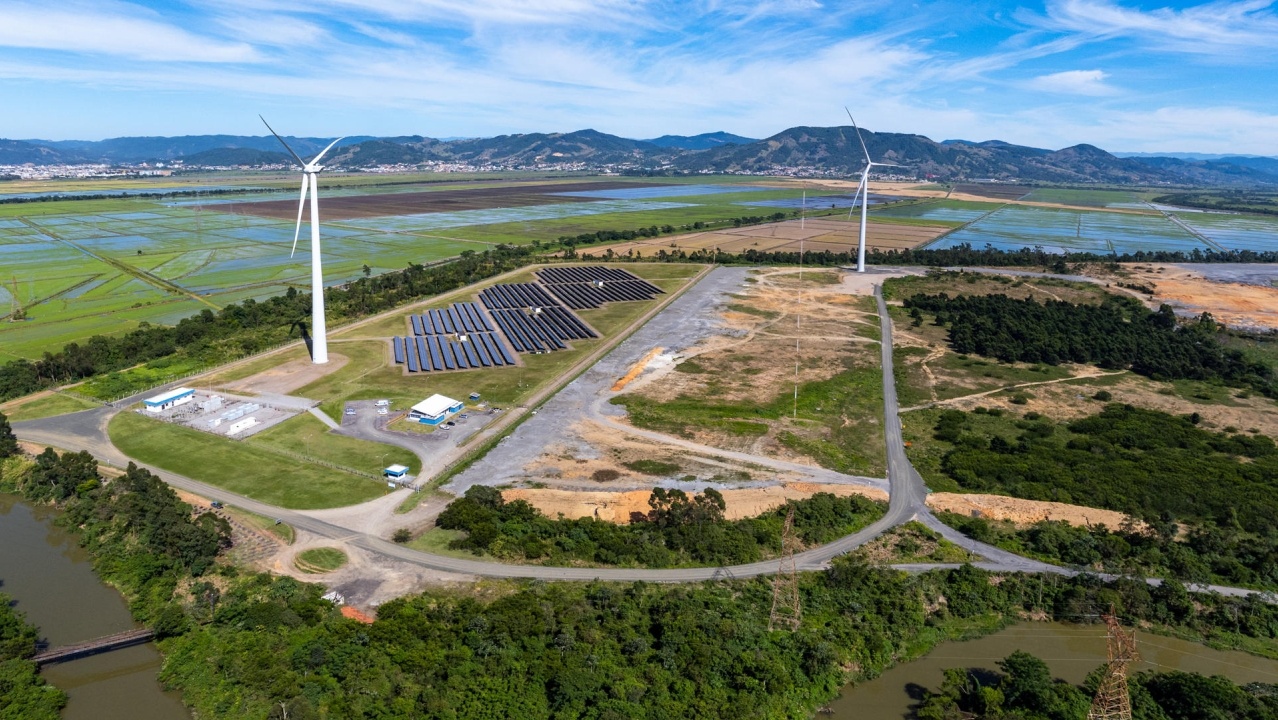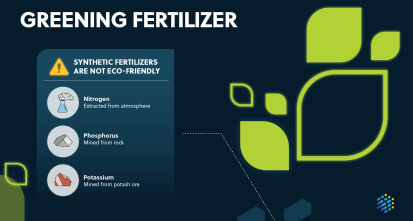Gain new perspectives for faster progress directly to your inbox.

With so much being published on green energy and sustainability, how can you identify the fastest growing areas of research? Learn how CAS Insights provides a unique view of the green energy research landscape and can help you identify emerging trends sooner. Subscribe to be the first to know when we publish new scientific insights.
Fossil fuels remain our primary energy source, but their limited availability and negative environmental impact have led to events like the 2023 United Nations Climate Change Conference (COP28) to seek green energy alternatives. These are sources that can be replenished in the average human lifespan and have a net zero environmental impact.
Every year, millions of journal articles and patent applications are created, so it can be difficult to identify the signals from the noise. CAS curates, connects, and analyzes the world’s published science inside the CAS Content Collection™ to provide a unique view of the scientific landscape. This enables novel insights that show emerging trends in new research areas. Five broad areas of research were identified that contained the fastest-growing trends: batteries, hydrogen energy, solar cells, new materials, and photothermal energy.
How was the analysis done?
First, CAS identified almost one million indexed documents in the CAS Content Collection™ that were relevant to the green energy space. Then, our researchers analyzed the hidden connections between key concepts using advanced analytics, knowledge graphing, and natural language processing to identify emerging trends in this area. Finally, our expert scientists with dozens of years of experience derived unique insights from the landscape of connections created. Several exciting growth patterns emerged between 2018 and 2022 that are early indicators of opportunities ahead. While many areas of green energy are growing quickly, we identified and prioritized the top ten emerging topics (Figure 1) that will help us reach a more sustainable future.
Batteries, energy storage, and battery recycling
Batteries are the leading method of storing electricity worldwide. Lithium-ion batteries have become commonplace, being used in portable devices and electric vehicles due to their high energy density, while lead-acid batteries are conventionally used for portable and stationary power storage. However, lithium-ion batteries are a fire hazard while lead-acid batteries are notably toxic. This has led to researchers looking for alternate, safer ways to store electricity.
- Aqueous zinc-ion batteries: These batteries are being studied as alternatives to lead-acid batteries because they are naturally occurring, much more environmentally friendly, and notably cheaper and non-toxic.
- Solid-state lithium-ion battery: Standard lithium-ion batteries degrade quickly, are fire hazards, and have high toxicity. However, they are still widely used because of faster charging and easy manufacturing. Solid-state lithium-ion batteries can be charged and discharged many times more than lithium-ion batteries and hold more electricity.
The successful development of these new battery types will make the industry much safer. Not only will solid-state lithium batteries be less of a fire hazard, but the overall pollution will drop, owing to the absence of toxic liquid electrolytes and more sustainable production. Learn more about lithium-ion batteries, the landscape of recycling legislation and regulations, and the new breakthroughs that are driving innovation.
Hydrogen energy, green hydrogen economy, and hydrogen storage
Hydrogen has emerged as a promising alternative to fossil fuels, being more environmentally friendly, having higher energy per given weight than gasoline, and more applicable in many energy-related fields.
- Liquid hydrogen storage: Hydrogen has three times the gravimetric density of gasoline but only one-fourth of the volumetric energy density. This means liquid hydrogen is considered the most efficient method of storing hydrogen in its base form, and researchers are seeking new ways to take advantage of it. If properly harnessed, liquid hydrogen storage could enable new fuel cell-driven automobiles and decrease costs in petroleum refining, fertilizer production, and more.
- Water splitting using heterojunction photocatalysts: Photocatalysts have emerged as a sustainable energy source, producing hydrogen using only water and sunlight. The main challenge, however, is identifying or developing them due to low efficiency and unsuitable band positions. Once these hurdles are overcome, the cost of hydrogen is expected to decrease, which could make it the preferred fuel source.
The benefits of these hydrogen production and storage technologies are immense. Urea oxidation will be dual purpose, cleaning water and providing energy simultaneously. More efficient storage methods could facilitate the utilization of hydrogen fuel cells, revolutionizing commercial products like automobiles. These changes would be further bolstered by new water-splitting methods, which would make accessing the necessary hydrogen for these processes much cheaper. Learn more about photocatalysis and new breakthroughs in the landscape of green hydrogen production.
Solar cells
Solar cells have seen an increased interest both academically and commercially. As industries look for more sustainable options, there will be more studies on how to optimize this technology for higher efficiency and lower cost.
- Non-fullerene acceptors for solar cells: The performance of organic solar cells has increased, but development is already underway to replace their most used acceptor, fullerene, with an alternative. These non-fullerene acceptors have more tunable properties, higher thermal and photochemical stability, and can lead to longer device lifetimes. This could lead to more stable, longer-lasting, and cheaper solar cells.
- Stable perovskite solar cells: As researchers look to enhance the efficiency of solar cells, one area of interest is perovskite-based solar cells. These easy-to-fabricate, low-cost cells have reported some of the highest energy efficiencies. However, the current materials used are unstable in certain conditions. The advantages of stable perovskite solar cells remain substantial and could diminish manufacturing costs if this challenge is overcome.
The main hurdle that these two innovations could overcome is cost. By cutting out fullerene or developing cells with perovskite, solar energy could be more affordable to many consumers. Learn more about emerging technologies in materials.
Sustainable chemistry, new materials, and greener alternatives
Noble and toxic metals are frequently used in the energy field. While functional, risks and challenges remain, hindering the industry’s progress. This has led studies to examine more sustainable and efficient alternatives.
- Mxenes: These are two-dimensional materials that incorporate a transition metal and a functional group. Their layered nature makes them strong candidates for energy storage applications like capacitors and batteries while their optical and catalytic properties have potential in photocatalysis and electrocatalysis. Mxenes also contain earth-abundant elements, circumventing the risks associated with noble or toxic metals. Any breakthrough with this material could result in significant cost, environmental, and energy storage benefits.
- Covalent organic frameworks: These are two or three-dimensional structures formed by organic precursor reactions. Forming covalently bonded, porous structures, they are being studied for hydrogen/methane and catalytic/electrocatalytic energy storage applications. Successful covalent organic framework applications could lead to many economic and environmental benefits in energy storage, chemical synthesis, catalysis, and gas separation with special interest in the automobile industry.
These materials have many possible applications. Both being made of earth-abundant materials, they will be more available and sustainable compared to other materials. By replacing current materials with covalent organic frameworks and mxenes, there will also be significant environmental and economic benefits across many industries. Learn more about sustainable catalysts, new biomaterials, and carbon nanotubes that can help build upon new opportunities ahead.
Solar energy, photothermal conversion, and green energy sources
As researchers try to find ways of reducing energy’s environmental impact, special interest is placed on renewable sources. Solar is already gaining commercial and industrial popularity, but further breakthroughs could lead to wider adoption.
- Photothermal energy conversion: The conversion of solar energy to heat, which generates steam, can generate electricity without using other sources. Researchers are studying inorganic and polymeric materials to find a suitable photothermal candidate. Success in this area could lead to a drastic energy cost reduction, owing to the sole reliance on solar energy. It would also have a substantial positive environmental impact by ideally removing the need for fossil fuels.
Unlocking the potential of photothermal energy conversion could lead to immense energy cost savings and cleaner energy sources. Additionally, there has always been a desire to use solar energy to split water atoms for clean hydrogen production. This process of photocatalysis would be critical to using solar energy for clean hydrogen production and could reshape the future for a green hydrogen economy.
Looking ahead
Green energy will remain a large research focus as we seek a net-zero environmental impact thanks to events like COP28. Suitable alternatives are being examined, but there remain challenges and risks that must be overcome before we see real-world applications. As more green energy advances are made, it can be challenging to keep up with the new developments. Subscribe to CAS Insights™ for unique views and the latest updates on green energy alternatives.



